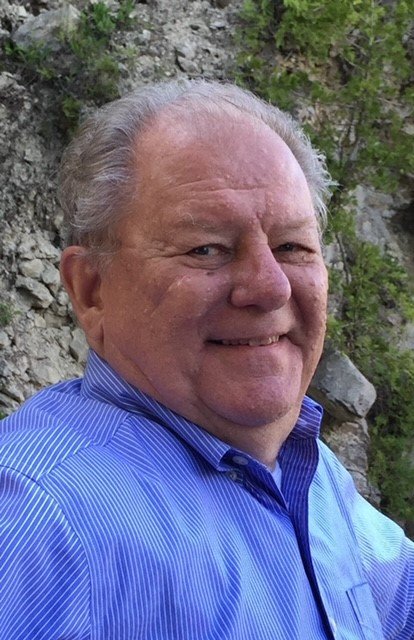By: Kevin Berrill, LCSW
Ready or not, the holidays---Thanksgiving, Chanukah, Christmas, Kwanzaa, and New Years---are just about the corner. Even the healthiest people can feel overwhelmed or overstimulated by the frantic pace, unrealistically high expectations, and the sensory overload of holiday music and muzak, advertisements, food and drink, decorations and displays, and social obligations.
Bane or Blessing? The experience of cancer during the holidays affects each person differently. Some glide through the season with ease and a feeling of joy; for others, it is a hard slog to endure. One of the most common reactions is ambivalence.
On the one hand the holidays can be a welcome departure from routine. They afford an opportunity to look more deeply into life, take less for granted, reset priorities, renew spiritual faith, or connect more deeply with loved ones and strangers alike. On the other hand, for many the holidays are a source of added stress and uncertainty. People with cancer (and other serious illnesses), along with their caregivers, often feel out of sync with the celebratory atmosphere all around them and have unrealistic expectations of themselves and others.
Looking Back and Ahead. The holidays mark the end of one year and the beginning of another. They are a time when we look at the past and toward the future. Those who are newly diagnosed, especially those with cancers that are difficult to treat or have a poor prognosis, may look to the coming year with trepidation. Fear that “this will be the last” can weigh heavily and lead some to overexert in order to make the season perfect. The prospect of a new year also raises questions for those who have finished treatment or who have an excellent prognosis: “Will it come back next year?” “If it does, how will I manage it?
Old Traditions, New Circumstances. Some in the midst of cancer treatment---and their caregivers---may wonder if they have the stamina to get through the holidays and another round of chemo, radiation, or some other therapy. Those who once avidly shopped and entertained might now dread the prospect of doing either.
Visiting with loved ones for the first time since undergoing treatment can be comforting and heartwarming. For some it can also be awkward and anxiety provoking, especially having to deal with others’ reactions to their diagnosis or changed appearance (e.g., loss of hair, weight loss or gain). These reactions may include discomfort, avoidance, pity, fear, unwelcome medical advice, or lectures on what to think or feel in order to get well.
Finances. Cancer treatment is expensive, unmanageably so for those who have no medical insurance or who are underinsured, or who find themselves unable to work. Those under financial stress, especially whose tradition it is to exchange gifts, face difficult choices about what, if anything, they can afford. For parents of young children these choices are all the more difficult.
Despite medical advances, much about cancer that cannot be controlled. To find a sense of balance in the midst of cancer and the holidays requires forethought and planning. If you or someone you love is facing cancer, consider the following suggestions:
Allow your feelings: Life threatening illnesses such as some cancers, change the world as we know it. It is natural feel sad, angry, despairing, confused, numb, guilty, or lonely. Ignoring and suppressing your feelings and pretending to be cheerful are likely to make the holidays more difficult. Sometimes when we accept rather than resist our feelings, moments of happiness break through the clouds. If so, give yourself permission to enjoy those moments.
Respect your needs. If you have concerns about whether your usual holiday plans are right this year, it is okay to break with tradition. Allow yourself to change where, when, how, and with whom you spend the holiday. If you used to host holiday dinners, consider a potluck instead. Give yourself permission to decline party invitations and to avoid people and situations that leave you feeling depleted, irritated, or depressed.
Let others know if you don’t if you don’t have the energy or the financial means to buy presents. If you choose to participate in holiday gift giving, keep it simple. For example, shop online, buy gift cards, or buy the same item for each of your intended recipients. Limit your spending to what you can afford and will not regret having to pay for.
Make a plan. It matters less what you plan to do than that you have a plan. Spontaneity is great, but having a plan, even if you decide to change it, is likely to give you a greater sense of control, making it less likely that you will end up feeling isolated or blindsided by others’ expectations and decisions. Be sure to let others close your plan. Be gentle. Pace yourself. Perhaps your plan will be the start of a new, simpler, and saner holiday tradition---or maybe it will be just enough to help you muddle through until January 2.
Take care of your body. Try to get enough rest, nourishment, and exercise. Be mindful of your alcohol consumption. Alcohol is a depressant and can worsen your mood. Limit sugary treats as they too can leave you feeling depleted and depressed. Stick as much as possible to your routines and eat sensibly, including plenty of vegetables, fruits, and whole grains.
Be supportive. If there is someone in your life who has cancer offer the gift of your listening and care. When it comes to holiday plans, let them lead. Refrain from fixing, giving advice, or pushing a holiday agenda; rather, explore with them what would offer the greatest healing and comfort. If you offer a holiday invitation and they decline, let them know they can change their mind at the last minute. A thoughtful phone call, card, or email can also make a meaningful difference. If you want to offer help, be specific: “Can I pick up anything for you while I’m at the grocery store?” or “Would you like me to take the kids out so you can get a nap?” is much more helpful than “Let me know if there is anything I can do.”
Pause and breathe. At a time when so many around you are caught in an endless round of buying presents, give yourself the gift of presence, taking a sacred pause several times a day to refresh yourself and just be.
Reach out. If you need practical support, reach out to understanding loved ones. They may be eager to help but not know how. Let them know what you need---a cooked meal, help with shopping or hosting, someone to babysit the kids, prayers, or kind and supportive listening. Delegate responsibilities whenever possible.
In a world that extols health and vigor and promotes the illusion that life is controllable, the experience of cancer sometimes brings with it feelings of isolation and stigma. The antidote to loneliness is connection. To the extent you can, open yourself to others’ attention and affection. If you have the energy, offer your care to someone else---a loved one or a stranger. Compassionate speech and action help us all to transcend difficult circumstances and enter more fully into our shared human condition. For those with a particular religious faith or spiritual practice, cancer is an invitation to explore and deepen.
Solitude can quiet the mind and body, help us to recharge, and tune in to what matters most. Allow yourself time alone when need it.
It helps to be around people who “get” what it feels like to be affected by cancer. Ann’s Place in Danbury, CT, offers individual counseling, support groups, and a myriad of wellness activities to those affected by cancer and who share their lives. Our services, which are offered free of charge, are there for you this holiday season and all year long. Reach out to us if you think we might be able to help. Doing so may help the holiday season---and the year ahead---look and feel brighter.
Kevin Berrill is a clinical social worker at Ann’s Place which serves living with cancer and those in their lives.
































